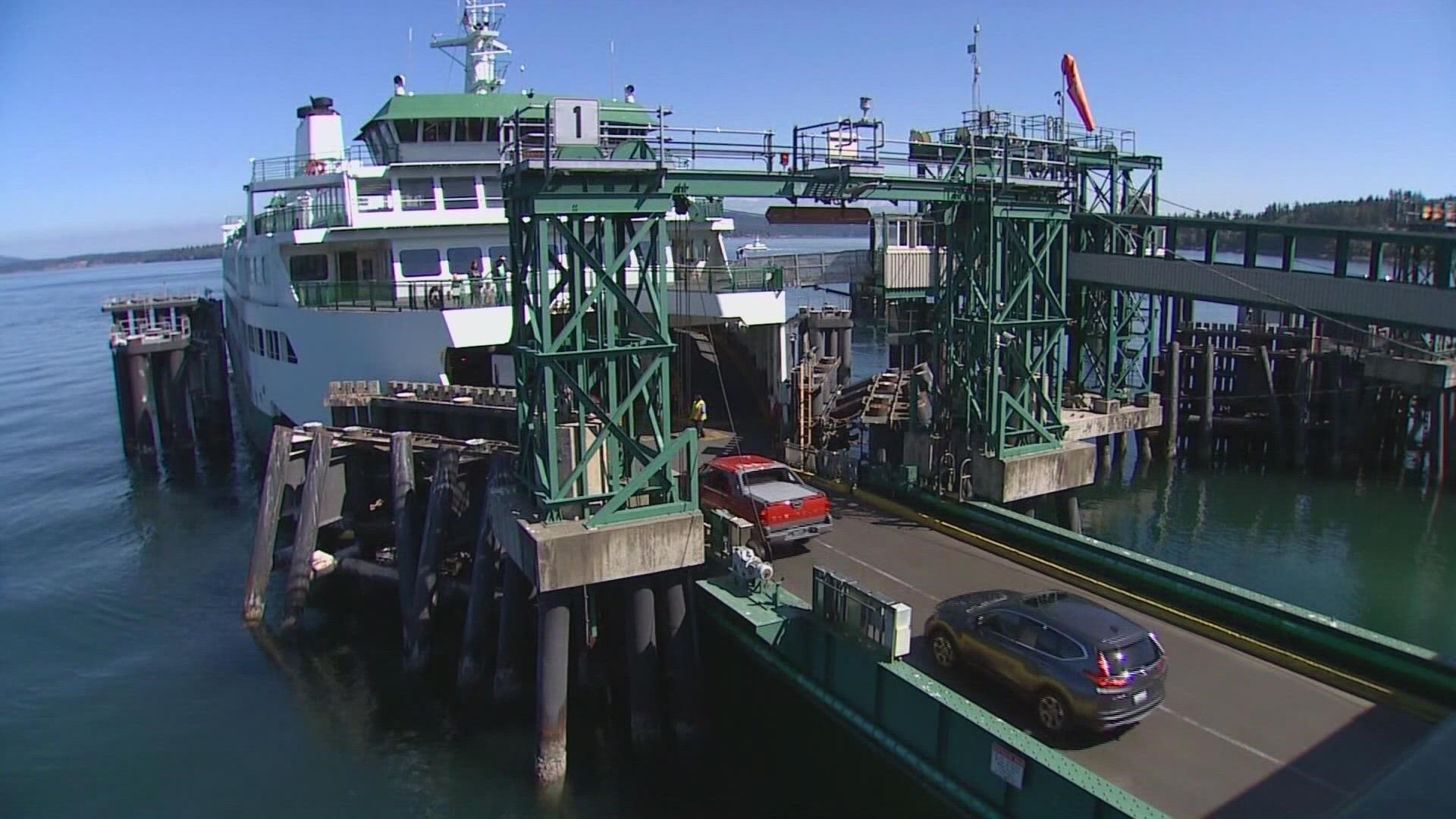SEATTLE — The Washington State Ferries (WSF) received nearly $12 million in federal funding for various projects, including efforts to improve the ferry fleet, Senator Patty Murray announced on Thursday.
Murray said WSF will receive $11.5 million for the improvement and electrification of the Washington State Department of Transportation's (WSDOT) ferry fleet.
The funding includes $4.9 million for constructing an electric charging station at the Clinton Ferry Terminal, $5 million for a new passenger terminal building at the Southworth Ferry Terminal and $1.7 million to upgrade credit card technologies across the WSF's system, according to an announcement from Murray.
WSF is receiving funding for the projects from the Federal Transit Administration's Electric or Low-Emiting Ferry Pilot Program and the Ferry Boat Discretionary Grant Program.
Murray said the money will help modernize passenger ferry services, with a focus on climate-friendly technology.
“Like so many in Washington state, ferries are a part of my commute, so I know first-hand just how important it is that they are running on schedule to get people where they need to be,” Murray said. “We really depend on our ferries—that’s why I worked tirelessly to secure new funds to help WSDOT expand and improve their service—and achieve their goal of electrifying the entire WSF system, because, with the largest ferry system in the country, it’s so important we lead the way in electrifying our system and reducing its environmental impact as much as possible. With these grants, we can improve efficiency, lower emissions, and safely get families from Point A to Point B.”
Officials with WSF said earlier this month that the agency experienced plenty of ups and downs last year, with one of its biggest challenges being a workforce shortage.
"We grappled with some challenges, but also had a lot of successes," said Hadley Rodero, a spokesperson with WSF.
Rodero said the agency is looking to add services back as the system continues to recover from the pandemic. WSF has half of its 10 routes fully restored. The rest depends on vessel and crew availability. Right now, it needs to fill about 50 unlicensed deck positions, which primarily deal with the riders.
Last year there were a little more than 31,000 riders, less than half of the 65,000-plus riders that took the ferry in 2019. Despite the decrease in ridership, Hadley said staff has seen a growing trend of unruly passengers. To help with that, WSF is implementing a new warning system in the coming weeks to keep the riders in check.

